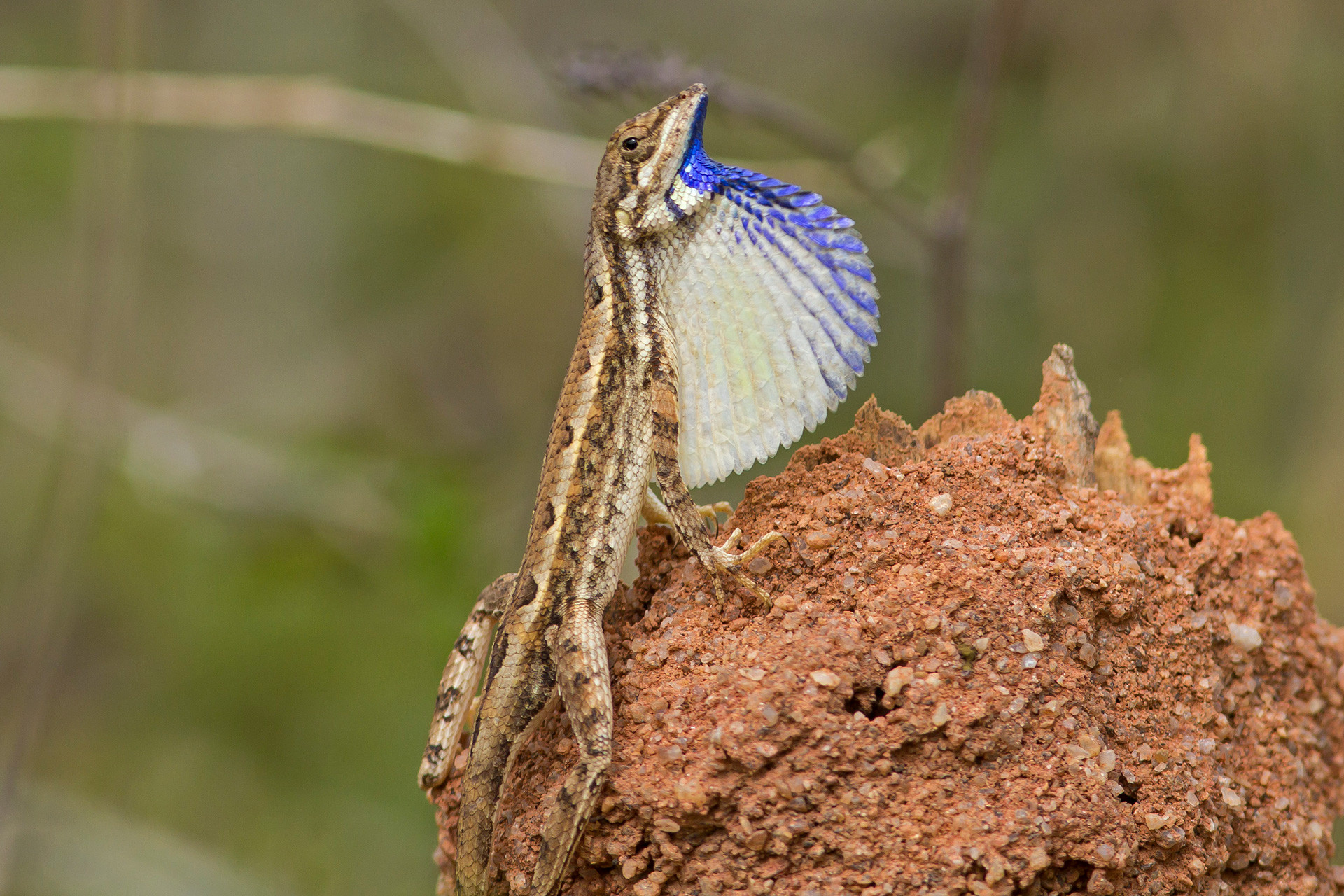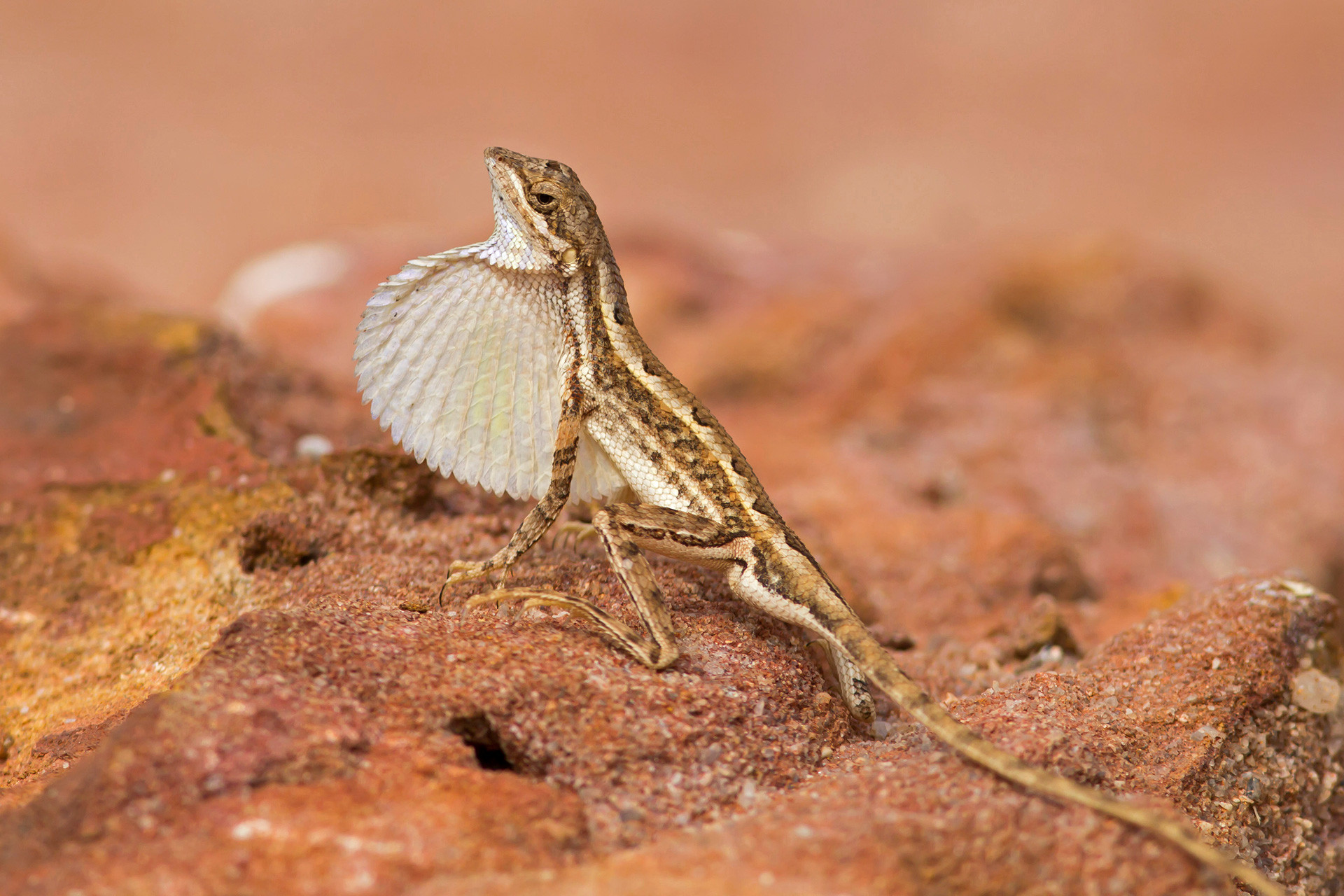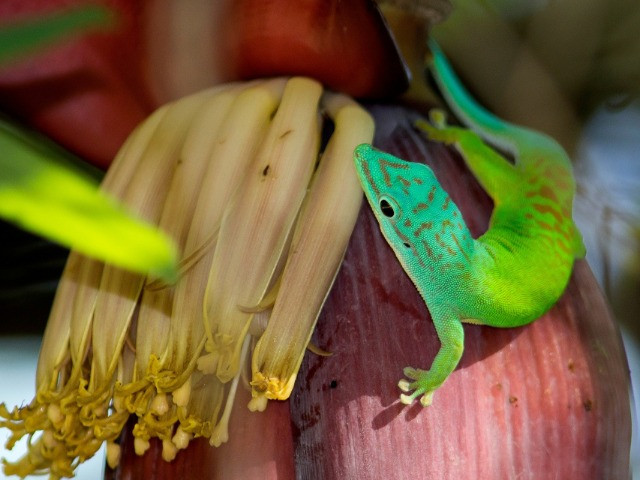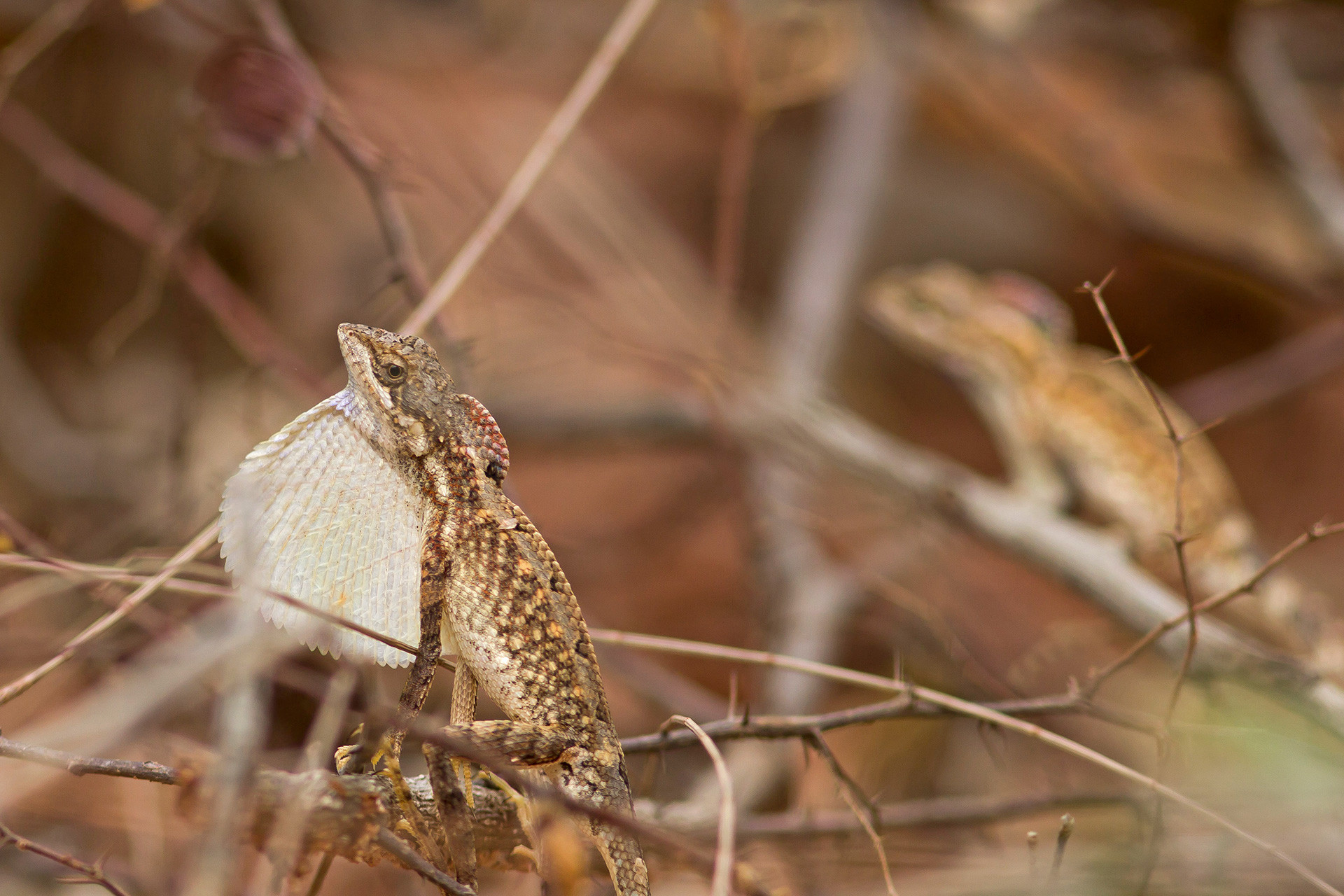A common sight in the outskirts of Pondicherry, the Cuvier’s Fan-throated Lizard (Sitana ponticeriana) is an agamid that is often overlooked and ignored. First described in Pondicherry in 1829 by Cuvier, over the years, more than 15 species of fan-throated lizards have been discovered all over the Indian subcontinent. These agamids get their name from a dewlap under their throat which they unfurl and display like a fan. When not displaying their dewlap, their cryptic colours and patterns help them to effortlessly blend into their surroundings. Sometimes all you will see is a quick scamper as an individual is flushed by one’s footsteps.
As in the case of most species in the animal kingdom, the male completely transforms when it is time to mate. During the breeding period, the aim of a male fan-throated lizard is no longer to stay hidden but to be as vibrant and conspicuous as it can be. In addition to their jazzed-up dewlaps, their entire behaviour changes, as they become more restless, patrolling their territories more vigorously, and regularly displaying their dewlap from atop rocks and bushes in an attempt to assert themselves.
The male’s activity levels would pick up late in the morning when the sun was high and clear in the sky. The territory of the individual I observed was spread roughly over a radius of about 10m, riddled with short vegetation and a few trees. In order to stand out in this landscape, the male fan-throated lizard had several perches from where he would perform his display of colour (can also be colourless). The perches ranged from large rocks to stumps of dead wood. As a performer, he would begin his approach by amping himself up as he strutted along, marching up to the perch in a staccato motion while pumping his throat with a deep blue pigment. Some days, all he did was tremble with excitement, and not open or loosen the dewlap. On other days, he’d be a show-stopper, with a flurry of frantic flicks of his dewlap.
There were days when a cloudy haze took over the sky, reducing the intensity of the sun, consequently reducing the energy levels of the male. On these days, the male would perform a slightly different display – a white fan, rather than a colourful one. From my observations, this adaptation could be due to two reasons: a lack of energy for an elaborate display with colours, or the lizard instinctively using the white fan as a reflective surface for the diffused light, making him visible to potential mates or rivals. Whatever the reason, his efforts certainly paid off as he protected his territory throughout that breeding season.
One day, things got quite heated as an intruding male waltzed right into his territory. Caught red-handed, the intruder had no other choice but to face the resident male – a battle for territory, for the right to mate, and for their lineage to continue. Neither backed down and instead approached one another in a Mexican standoff as their bodies transformed in preparation for a duel. Clashes between rival males in the animal kingdom are quite common, but only seldom end in a bloodbath, where one individual is killed or fatally wounded. For the most part, males will avoid the risk of a squabble by performing displays to try and outclass the other. Instead of climbing to higher ground, the rivals remained close, arching their back to seem larger and erecting a prominent dorsal ridge.
Displays and colours are a great benchmark for genetic strength because everything that’s colourful and stands out has a likelihood of getting eaten, and if a male has survived despite being conspicuous, they must have a healthy genetic makeup. The two male fan-throated lizards continued for several minutes, as they hopped around tactically, finding the best lighting for their colours. The rival began to slow down and started to take longer breaks, which was immediately detected by the resident male who wasted no time in sealing his victory with a sudden attack that threw his opponent off-balance.
The resident male had done everything right so far, and all that remained was for him to find a mate for the season. He diligently continued his displays, moving across his territory, displaying non-stop in his quest to attract a female. These continuous displays take a significant toll on the male, but if he can continue to display without taking much of a break, that too shows how healthy he is. Unfortunately, due to my limited hours of observation, I wasn’t able to watch him succeed in finding a mate.
No matter how incredible a spectacle you witness, nature always keeps a little something hidden at all times. This sequence of displaying by a fan-throated lizard was something I was able to witness after years of searching and exploring, but my work does not stop here. The next attempt is to document that final mating sequence!






